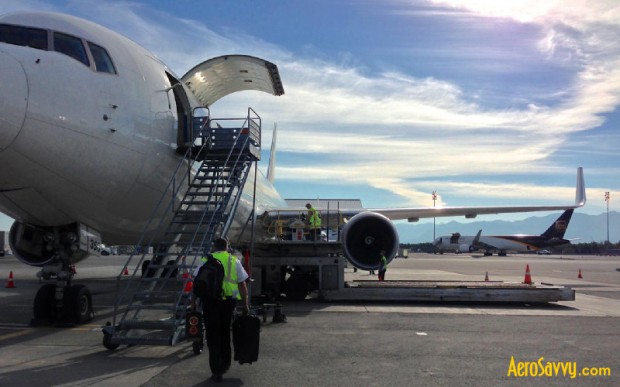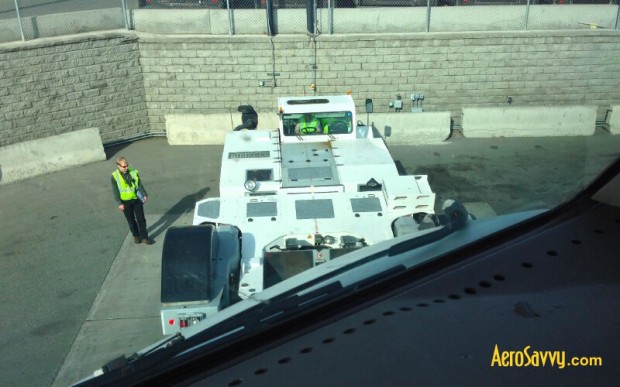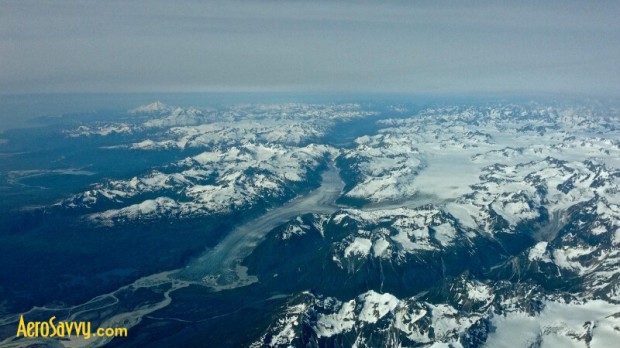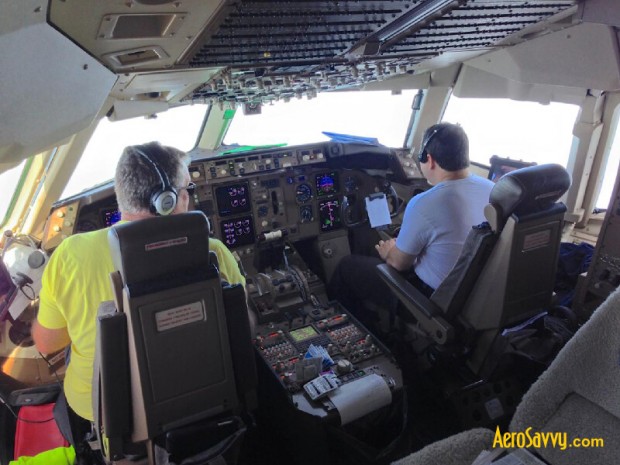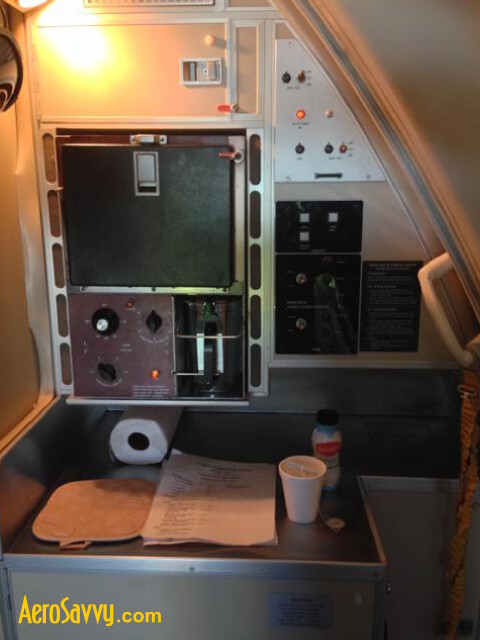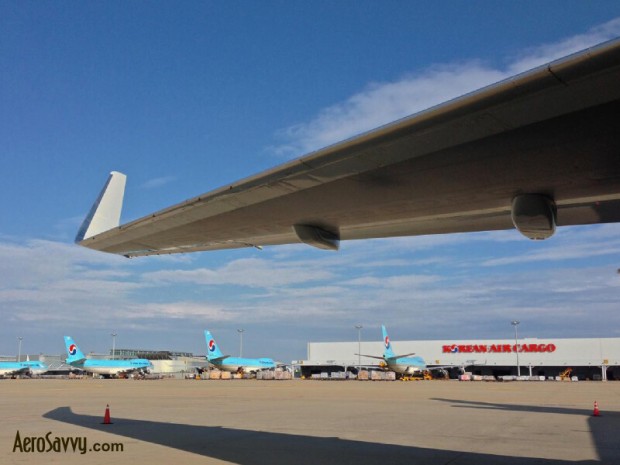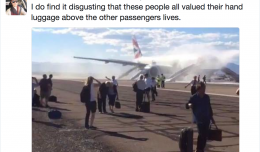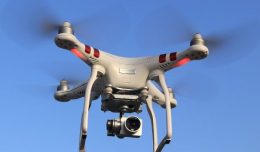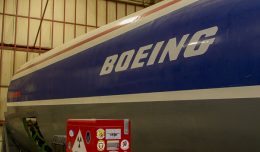Have you ever wondered what it’s like to ride on the flight deck during an ocean crossing? How does the flight crew prepare for the flight and what do they do along the way?
Take a seat in the front office of a wide-body Boeing 767 and I’ll show you!
On today’s journey, we’re flying 88,000 pounds of packages and cargo from Anchorage, Alaska to Incheon, South Korea. Although this is a cargo flight, the preparation and activities of the flight crew are similar to those of a passenger crew.
Anchorage, Alaska – 8:15 a.m. Alaska Time
The hotel shuttle dropped off three of us at our operations office. Today’s crew includes myself as captain; Jim, my first officer (F/O); and Dave, our international relief officer (IRO). An IRO is an extra crew member required on flights over eight hours.
My first stop is the operations window where I pick up a thick packet of papers. The flight planning was done earlier in the morning by our dispatcher 3000 miles away. She did most of the hard work for us, then transmitted the packet to Anchorage for printing.
It’s an hour and thirty minutes prior to departure.
At a table in the ready room, the three of us divide up the paperwork. I grab the computer generated flight plan and weather forecasts. Jim looks at the performance data to determine runway requirements, takeoff power and flap settings. Dave sits down with a North Pacific navigation chart and highlights our route of flight, making several required notations.
In 20 minutes we finish up and review each others work. We have just enough time for coffee before walking out to the airplane.
Meanwhile, at the aircraft…
Our aircraft arrived from Tokyo a few minutes before we were dropped off. As soon as the engines stopped turning, the ground crew began to unloaded the inbound cargo. As the last containers are unloaded, our Incheon freight begins to arrive at the jet for loading. A fuel truck fills our tanks with 120,000 pounds of jet fuel as two aircraft mechanics closely inspect the 767-300ER for its second long journey of the day.
These jets stay busy, sometimes flying up to 18 hours a day with only enough time on the ground for crew changes, loading, and servicing.
55 minutes prior to departure
As my crew and I arrive at the aircraft, loading is just about complete. The mechanic gives us a friendly wave and a thumbs up indicating no maintenance problems. On board, a large box of catering sits by the galley. Food (and a working lavatory!) are very important on a long flight. We are each provided two meals today.
I take my seat on the flight deck and look at the aircraft’s maintenance logbook to ensure the required inspections have been completed. Next, I review the Anchorage airport taxi and departure procedures while Jim programs the ship’s navigation computer and reviews the performance data. Dave delivers our luggage to the loading crew before giving the aircraft a thorough exterior and interior preflight inspection.
20 minutes prior to departure
Jim and I are buckled in and ready as Dave finishes his checks. The load supervisor hands us the completed load manifest and wishes us a safe flight as he leaves. Dave closes the main cargo and crew entry doors and we are ready to depart.
Before pushing back, we discuss the taxi route and departure procedure assigned by air traffic control. More importantly, we go over our plans and duties should something go wrong during takeoff.
Early departure
Using the jet’s intercom, I say “hello” to the mechanic standing outside, next to our nose wheel. He clears me to release the parking brake and the tug slowly pushes us back from the gate. As we move onto the taxiway, Jim rotates the engine start switches to bring the engines to life. After the tug is disconnected, our mechanic bids us farewell and we give him a wave as he walks clear of the jet.
All three of us are fully qualified, type-rated 767 pilots. To maintain our skills, we take turns flying the aircraft. Today is Jim’s turn. As I taxi the aircraft to runway 33, Jim gives us his takeoff briefing, a short review of everything we’ve already discussed. The Before Takeoff checklist confirms that our flaps are in the takeoff position.
When we are lined up on the runway, the tower clears us for takeoff. Jim pushes the thrust levers forward and engages the autothottles. The engines spool smoothly to takeoff thrust as we begin slowly accelerating. Our fully loaded aircraft is close to its maximum takeoff weight of 408,000 pounds. It’s going to be a long roll. Passing 150 knots, Jim lifts the nose off the ground and we begin climbing into the morning sky. After making a turn, departure control clears us to a navigation fix near the west coast of Alaska. Passing through 15,000 feet, Jim calls for the autopilot to be engaged and we continue climbing to our cruise altitude of 32,000 feet.
Although the autopilot will be on for the next 8 hours, we humans will still be flying the 767. The autopilot simply allows us to take our hands off the controls so we can concentrate on the weather, communications, navigation and various aircraft systems. There’s still a lot to do.
Coast out checks
Before flying 2,500 miles over the ocean, we need to check several systems. While Jim monitors our flight path, I test our satellite datalink then check the altimeters and navigation systems for accuracy. Dave is in the jumpseat behind us updating our paper flight plan with estimated arrival times for each check point along the route. We use the paper flight plan to track our actual vs. planned fuel burn and segment times. It’s also maintained in the unlikely event both of our navigation computers take a holiday.
By the time we reach our cruising altitude, the three of us have been very busy for two and half hours. It’s finally time to relax.
Cruise: Time to get comfy
One at a time, we can get up, stretch, and move around the flight deck. The IRO will take over for the pilot taking a break. On long flights we often change out of our uniforms and into sweats and t-shirts. Flying in pajamas is one of the perks of flying cargo!
When it’s time to eat, the ship’s galley has a convection oven and a hot water pot for coffee or tea. Shortly after we reach cruise, Dave will have breakfast and coffee warming up.
Cruise flight is easy and (hopefully) boring. Over the Pacific, we talk to Anchorage air traffic controllers every hour or so until we are south of the Kamchatka Peninsula. There, we establish a satellite datalink with Tokyo Control and communicate using a type of text messaging. It sure beats the old days when we relied on high frequency (HF) radios that are difficult to hear.
Most of our time during cruise is spent checking fuel consumption, verifying our position, watching the weather, eating, drinking coffee, and talking. You really get to know the members of your crew during a long flight!
On most over water flights, we will stay on our planned route. On the occasion that we encounter a storm, a radio call or text message to Anchorage or Tokyo will yield us permission to deviate around the bad weather.
Approach and landing
As we approach the northeast coast of Japan, we contact Tokyo Control by VHF radio. Flying over Japan is easy; their controllers speak excellent english. Tokyo monitors our progress as we fly southwest across the island. Over Yonago, we bid farewell to Japan and head across the Korea Strait to South Korea. Like the Japanese, South Korean controllers are real pros. They’re friendly and can efficiently handle a lot of international air traffic. We are routed directly into the busy Seoul/Incheon airspace and begin our descent for Incheon International Airport.
 South Korea’s neighbor to the north
South Korea’s neighbor to the north
Takeoff and landing at Incheon is interesting. Only 20 miles north of the airport is North Korea and the most heavily militarized border in the world. It’s no secret that tensions are high between the two Koreas. We must not stray into the military prohibited area. During our approach, we fly within 6 miles of the border and only 1 mile from the prohibited zone, so we follow the arrival route precisely. The Incheon and Seoul controllers handle hundreds of flights daily without incident. Landing and departing at Incheon are challenges that pilots enjoy!
Once we are cleared to land, Jim skillfully flies the final approach and eases the 767 gently onto the runway. After a short taxi to the gate, I shut down the engines and we quickly pack up our gear. We left Anchorage at 9:32 am, Friday morning. Thanks to our travel across the international date line, we arrived at 11:08am, Saturday morning. Our flight time was 8 hrs, 36 min.
After clearing customs, we head to the hotel for a 40 hour break. Incheon is one of my favorite layovers. Our hotel is located in the new Songdo district. Great restaurants, coffee shops, a beautiful Central Park, and friendly people await.
Tonight’s plan? Dinner at a Korean Barbecue restaurant!
Ken Hoke has been flying for over 30 years. He’s currently a Boeing 767 captain flying international routes for a package express airline. In his spare time, he writes the AeroSavvy blog. Follow Ken on Twitter, Facebook, Tumblr or Google+.




